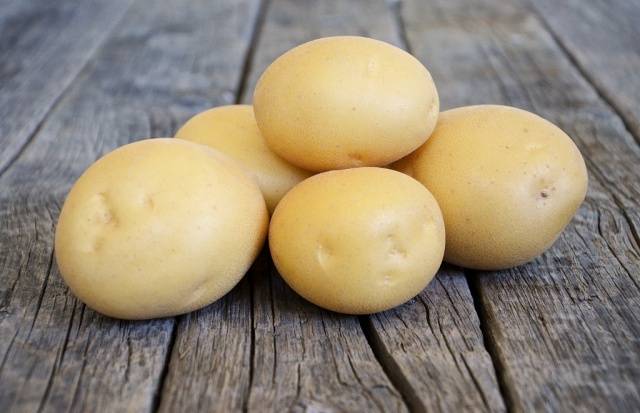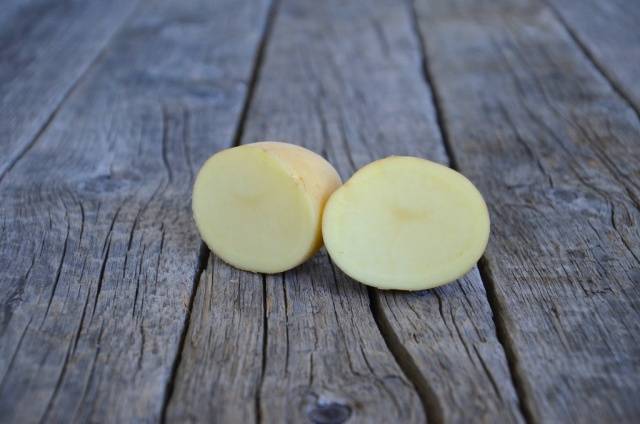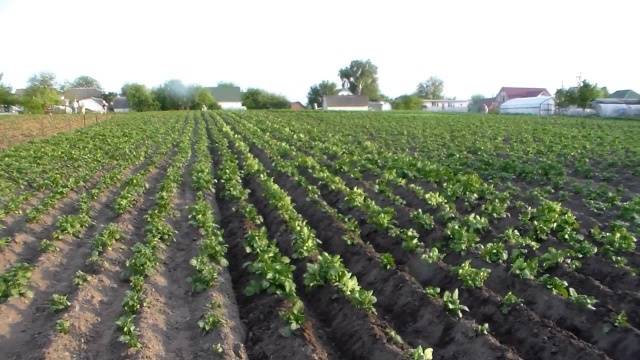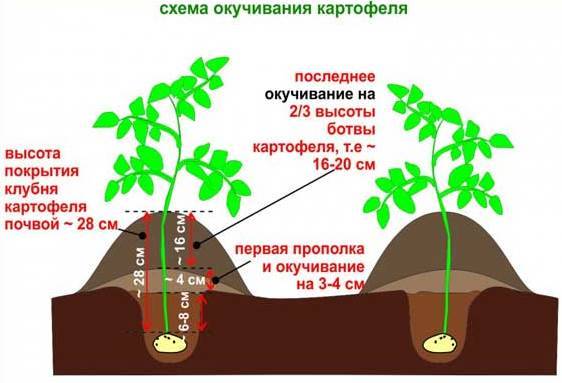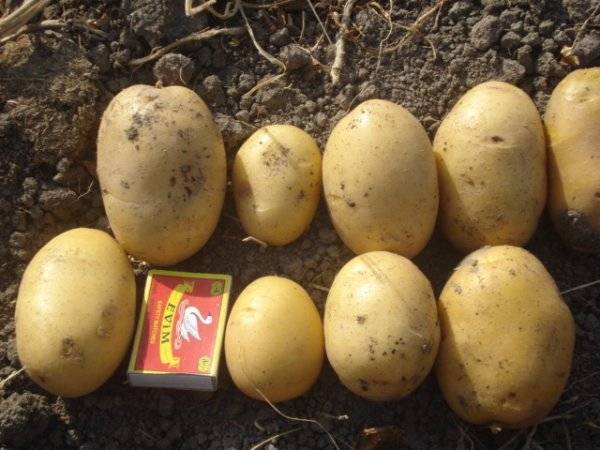Content
Agata potatoes attract with their unpretentiousness to growing conditions and stable high yields. The variety is resistant to most potato diseases, is not afraid of short-term drought, gives the first marketable tubers in a month and a half.
Origin story
Dutch breeders have developed the Agatha potato variety as one of the most productive. Agata potatoes have become widespread in Europe among farms. Recently, a resistant variety began to grow in Russia. The Agata variety is suitable for planting in regions with short summers, in the central, Volga regions, in the Urals and Siberia, because it ripens quickly and gives a rich harvest. The potato variety is recommended for cultivation on private plots and on an industrial scale.
Description and characteristics of Agatha
Mid-season table potatoes Agata are sensitive to fertile soils and fertilizers. In the fields, the average yield is 250 centners / ha, with intensive technologies up to 400 centners are harvested. The first tubers can be dug in 50-55 days, already in July, full ripening - in August, after 80-85 days. Tubers are well preserved until spring, their keeping quality is 93%.
Low, erect bushes of Agate potatoes are moderately spreading, with medium leafy stems. The leaf is small, the edges are slightly wavy. The flowers are white, they are not created on all bushes, the fruits are rarely formed. The developed root system allows the bush to grow 10-15 large tubers. There are few small potatoes.
Oval-elongated tubers are uniform, neat appearance, with small eyes. Weight 70-140 g, on average most tubers are above 100 g. The peel is smooth, light yellow, the flesh is dense, yellowish-creamy. There are 12-14% starch in the tubers, so the potatoes are not boiled, but the mashed potatoes are tasty and airy. The variety is suitable for frying, baking, making chips, frozen vegetable mixes, freeze-dried puree. When cooked, the flesh of Agate potatoes remains light, the taste is rich.
Advantages and disadvantages
Agata potatoes are loved by farm owners for their productive potential. The variety has shown itself well on any soil, but on more fertile lands, the collection is richer. The advantages of the variety are obvious:
- Ability to bear fruit on different types of soil;
- High and stable yield;
- Excellent consumer qualities;
- Marketable form of tubers;
- Transportability and keeping quality;
- Versatility of application;
- Resistant to common potato diseases.
Among the disadvantages of the Agata variety, one can indicate the susceptibility of potatoes to late blight. But none of the varieties have resistance against the disease.
Landing
For Agata potatoes, early planting is recommended, from the second decade of April, when the weather is warm. The soil should warm up to 10 aboutC at a depth of laying seed material - 8-10 cm.The Agate variety can also grow on heavy clay soils, the tubers are planted shallowly - up to 6 cm.On sandy loam they are located deeper - up to 8-10 cm.If fertilizers were not applied to the site in the fall, humus can be laid before processing the land - 5 kg per 1 sq. m.
A month before planting, potatoes are taken out of the basement and sorted out, rejecting diseased and damaged tubers. In a thin layer, in 2-3 rows, they are laid out in boxes for germination. Light sprouts of the Agata variety are oval, pink, pubescent.On the day of planting, the tubers are sprayed from possible fungal infections with Fitosporin, Prestige is used to scare off Colorado beetles or other drugs are used for these purposes according to the instructions. Also, the tubers are treated with growth stimulants.
Agate potatoes are planted in a spacious sunny area on high ridges or form ridges. The tubers are provided with sufficient nutritional area: row spacing 70-75 cm wide, the distance between Agata bushes 25-30 cm.
Care
The plot with potatoes of the Agata variety is loosened after the emergence of shoots. With the threat of recurrent frosts, the sprouts are sprinkled, completely covering the tops with earth. During the season, three times weeding and hilling of the bushes are carried out before flowering. Simultaneously remove weeds... Be sure to loosen the soil after watering so that it is more breathable.
For the Agata variety, it is recommended to carry out a drip irrigation system to ensure uniform soil moisture. Early potatoes develop intensively and require sufficient moisture.
- In a dry summer, Agatha potatoes are watered for the first time when the seedlings rise to 15 cm. Each bush must be supplied with at least 3 liters of warm water;
- In the budding phase, the required amount of water doubles;
- When the tubers of the Agata variety gain weight, each plant is given up to 12 liters of water.
The yield of the Agata variety increases on fertile soils and with timely feeding.
- Before the first hilling, fertilize with urea: 20 g of the product per 10 liters of water - 0.5 liters each under a bush;
- In the aisles, watered with a solution of mullein 1:10, infusion of bird droppings 1:15 or herbal infusion with wood ash;
- Apply according to the instructions solutions of complex mineral fertilizers Kemira, Kristalon, Omu, organomineral preparations Bulba, Giant and other dressings after abundant watering.
Foliar dressings are effective for the Agata variety:
- 15 days after germination, 100 g of urea, 150 g of potassium monophosphate, 5 g of boric acid are sprayed with a mixture of 10 liters of water. After 2 weeks, the treatment is repeated, but the amount of drugs is diluted in 5 liters of water;
- A month before digging out the potatoes, they are treated with superphosphate on a sheet: 100 g are diluted in 10 liters of water per 10 square meters. m.
Diseases and pests
The Agatha potato variety does not suffer from potato cancer and scab. Has medium resistance to fusarium wilt and late blight tops. To prevent the disease, the bushes are prophylactically treated with manganese, Oxyhom, Ridomil, Artsdil preparations. The same remedies are used, having noticed the disease, to save the tubers. After harvesting in the area where late blight was noticed, the seed tubers are treated with Immunocytophyte and kept in the air for a long time without being brought into storage.
Agatha potatoes resist nematode infestation, and against other pests on the site they use Medvedtox, Thunderbolt, and special insecticides against Colorado beetles.
Harvesting
Agata tubers are dug in August. Early harvesting protects potatoes from late blight. In a week, the stems with leaves are mowed and removed from the site. On a sunny day, tubers are left for 2-3 hours in the garden, and then dried for several days under a canopy. The potatoes are sorted out, whole, intact tubers are brought into the basement. Seed material is placed separately.
Conclusion
A productive variety is liked by many for its unpretentiousness to the composition of the soil and changes in the weather. A remarkable bonus to the stat is disease resistance. Having fed the plant on time, they get more than 1 kg from the bush.
